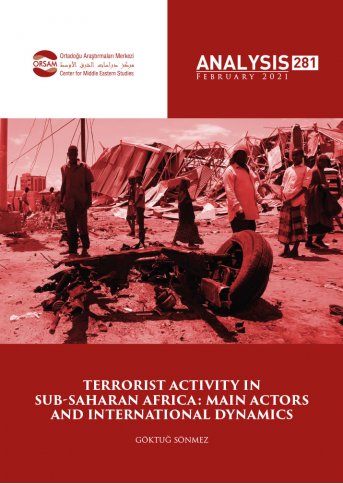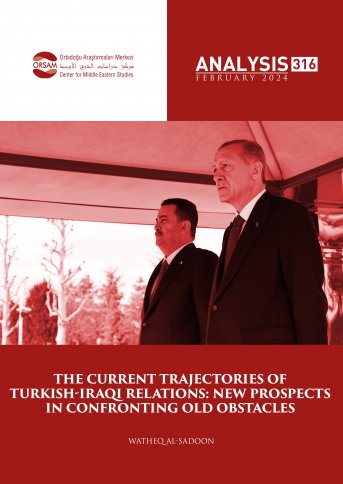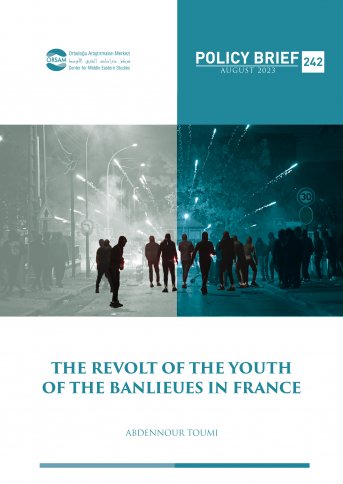
Terrorist Activity in Sub-Saharan Africa: Main Actors and International Dynamics
Sub-Saharan Africa has come to be one of the regions where ISIS and al-Qaeda gained influence and considerable visibility, both direct and indirect, particularly after 2014 and 2015. This region receives relatively less attention and scrutiny from academia, politicians and decision-makers compared to the Middle East and North Africa, which stand out as priority areas of global focus in recent years. In contrast, the region is of greater importance that is likely to increase due to the factors such as the increasing economic and political interest that the world has taken with regard to Africa and particularly to Sub-Saharan Africa, the rising competition among the great powers in the last two decades and Turkey’s active policies toward Africa. At the same time, the region has a five percent average growth expectation in 2020-2030 and some of the fastest growing countries of the last decade are located in the continent, which increases its global importance. Certainly, the small scale of regional economies and the international actors’ rising economic engagement in the region play a significant role with these numerical data. While the international actors increase their engagement in the region, which enjoys a significant forward-looking potential, ISIS and al-Qaeda have taken an interest in the region resulting in remarkable outcomes that are likely to continue in the following years. Within this framework, this report first touches upon the current situation of the region in the context of terrorism and then examines al-Shabab and Boko Haram, the two organizations with allegiance to al-Qaeda and ISIS. Afterwards, it elaborates on the forward-looking expectations related to these groups’ rising activities and Turkey’s possible role and policies.
According to the data by the Global Terrorism Index (GTI), which is the most important reference in its field based on the data collected by the Institute for Economics & Peace National Consortium for the Study of Terrorism and Responses to Terrorism (START) at the University of Maryland, forty percent of the ISIS-related deaths worldwide took place in Sub-Saharan Africa. Seven of the ten countries, which experienced the largest increase in terrorist activity on a global scale, are located in this region. While terrorism-related deaths decreased by 15.5% in the world between 2018 and 2019, it has risen by 67% in the region in the same period. The demography of the African continent, which is mobilized by the conflicts, genocides and forced migrations from Rwanda to Sudan, from Central Africa to Guinea and Liberia, suffers from systemic issues such as deprivation in new regions, integration problems and sociological and psychological problems that escalate the tension of the masses with the system. Nevertheless, the region has the potential to grow rapidly, has high human mobility and security problems, and thus has become one of the focal points of the world. Nonetheless, such a mobilized demographic entity is likely to pose important risks in terms of both hard security and human security. Therefore, the African continent has the potential to become the main source of international migration and related global crisis after the Middle East. The presence of terrorism in the continent should be traced back at least to the period when al-Qaeda took hold in Sudan, which coincides with the religiously-motivated fourth wave of terrorism in the context of the terrorism waves conceived by Rapoport even if the anti-colonial movement in Algeria is ignored.
Even though it was sidelined by the key role of Afghanistan in the christening of and the fight against global terrorism, Africa is the region where the structure conceived its identity and upgraded its action capability to a higher level. Despite the fact that al-Qaeda gained its form and visibility after the Soviet intervention in Afghanistan, Africa is the region that al-Qaeda managed to acquire the capacity for carrying out international and high-profile attacks. One should remember that al-Qaeda’s first attacks against the USA were the bombings of the US embassies in Kenya and Tanzania in 1998. For better understanding the Libyan crisis of today, one should consider the negative effects of ISIS and al-Qaeda affiliates in North Africa on both the regional stability and human potential of the region. Even though the focus of global terrorism shifted to the Middle East between 2012 and 2015 due to ISIS, it reverted back to its main course after 2015. Africa has gained more significance each year in the context of global terrorism and has turned into a region that surpasses the other two possible focal points, Central Asia and Southeast Asia.







